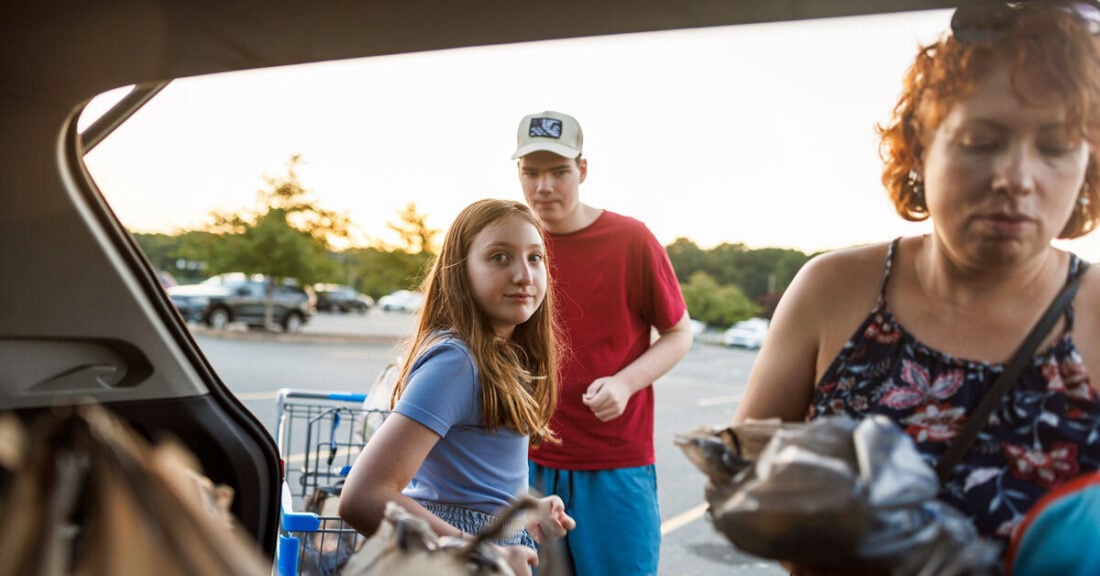Child Poverty Nearly Triples to 13% Over Three Years
Public Policies and Programs Proven to Halve the Rate

Child poverty in the U.S. has surged, nearly tripling from 5% in 2021 to 13% in 2024. This dramatic increase follows the expiration of pandemic-era economic policies and rising prices that have strained family budgets nationwide. However, a new report from the Annie E. Casey Foundation, “Measuring Access to Opportunity in the United States: A 10-Year Update,” underscores the profound impact of public policies and programs, demonstrating their capacity to cut child poverty in half.
This report, which analyzes U.S. Census Bureau figures from the annual Supplemental Poverty Measure (SPM), reveals that more than 1 in 8 children in this country lived in poverty in 2024. Without the support of government programs and policies, the child poverty rate would nearly double — underscoring how vital these efforts are to helping families make ends meet. Among children living in poverty, 61%, or 5.9 million, lived with at least one employed parent in 2024.
The SPM is a more accurate gauge of families’ economic situations than the official poverty measure’s income threshold of $31,812 for a family of four in 2024. The SPM accounts for essential expenses such as housing, medical and child care; adjusts for rising costs and geographic differences in the cost of living; and measures the effectiveness of vital resources like tax credits, Social Security, Supplemental Security Income (SSI), food assistance and housing subsidies.
“Poverty poses a serious threat to children’s development and long-term well-being, with far-reaching consequences for our economy,” said Leslie Boissiere, vice president of external affairs at the Annie E. Casey Foundation. “The data unequivocally show that public programs directly help our nation’s children. By investing in children’s well-being — through both public policy and employment practices that provide family-sustaining wages — we can enable more children to thrive and contribute as they become adults.”
In 2021, 5% of children in the U.S. lived in poverty, a historic low created by enhanced social supports and the one-time expanded child tax credit to support families during the pandemic. These combined government policies and programs lifted more than 15 million children out of poverty in 2021. Between 2021 and 2024, after those enhanced resources expired, the rate of children in poverty rose to pre-pandemic levels of 13% under the SPM. That percentage would be 25% without government interventions to alleviate financial hardship, demonstrating the crucial role of public programs and tax policies in the well-being of children in this country. The report also finds that rising costs are outpacing families’ earnings.
Policies and programs to stave off poverty are becoming more of a lifeline for families in the face of rising costs in recent years. As housing, food, child care, and health care costs continue to rise, families find it increasingly difficult to make ends meet despite receiving assistance.
While poverty rose among all children from 2021 to 2024, children of color had steeper rises than others. Poverty among Black children rose from 8% to 23%, and among Latino children from 8% to 21%. Geographically, the South has the highest child poverty rates and saw the greatest increase, up 5% between 2019–21 and 2022–24.
The Annie E. Casey Foundation report also emphasizes the importance of accessible public government data in measuring both the effects of programs on reducing poverty and the role of inflation and location play in families’ financial stability.
Researchers estimate child poverty costs the United States up to $1 trillion annually in lost productivity, lower lifetime earnings and higher spending on health care, crime and public programs. Communities with high poverty rates bear the costs of higher spending on health care and increased crime, while schools have fewer resources and worse outcomes than wealthier districts.
The data from “Measuring Access to Opportunity” demonstrate that:
- Millions of children are kept out of poverty by supportive public policies; without them, child poverty would nearly double. Policymakers must prioritize policies and investments that empower all families to lead healthy, fulfilling lives.
- Government data must remain available to accurately measure the effects of public programs on reducing poverty.
- Policymakers should ensure the continued availability of high-quality data from the U.S. Census Bureau’s Current Population Survey and other surveys.






